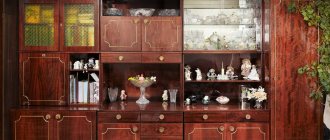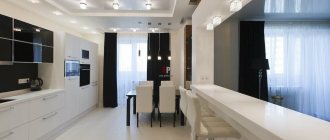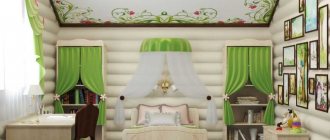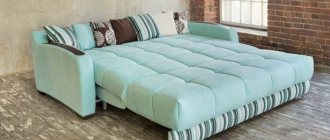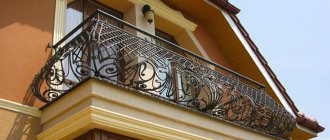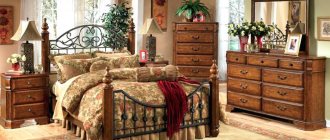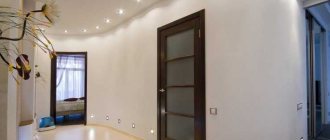Openwork gates and gates with original forged elements look quite original. Such products look really elegant and attractive. In addition, their main task - protecting the courtyard part - is successfully completed.
All the pros and cons of forged construction
Such doors complement the fences around:
- country houses;
- cottages;
- private companies;
- government agencies;
- entertainment complexes.
Among the advantages of beautiful forged gates:
- Unique details. They are forged by hand. That is why owners often order products from blacksmiths according to individual sketches and drawings, so that there are no repetitions.
- Beauty. Forged ornaments give the fence majesty, exclusivity, and emphasize the status of the owners.
- Durability. Metal protected with anti-corrosion compounds lasts up to a hundred years or more, remaining resistant to wear.
- Strength. The gates do an excellent job of protecting the property, protecting the estate from unauthorized entry.
- Compatibility with other materials. Wrought iron combines perfectly with brick or stone pillars, sections made of corrugated sheets, and polycarbonate.
- Environmental friendliness and safety of raw materials.
- Forging never goes out of fashion.
- Metal does not require special care.
Disadvantages:
- High price. Making custom gates is very expensive. If you undertake such a design yourself, you can save up to 30% of the total cost.
- Long production time. The work of a blacksmith is painstaking. It takes from 2 weeks to 1 month to produce an exclusive item based on an individual project.
At the planning stage, it is important to immediately think about which elements you can make by hand, and which are better to buy ready-made.
This is interesting: Vertical garage doors: features and varieties (25 photos)
Types of beautiful forged structures: transparent, with the addition of tin and other materials
Forged structures combine the qualities of aesthetics and functionality . They are assembled from different materials (stainless steel, metal sheets and profile pipes) and are complemented by elements made of polycarbonate, corrugated sheets, tin, sheet metal, wood, stone, concrete.
Forged gates according to the degree of openness are divided into:
- Transparent. They consist of vertical balusters and intertwined metal rods, creating beautiful ornaments and patterns . Classic products do not hide the garden plot from prying eyes, and the owners will not be able to privacy in their yard.
Forged transparent swing gates. Photo by IP Ninety
- Closed. They completely hide from passers-by not only the landscape design, but also the house itself. Blind products combine openwork forging and inserts from other materials .
Blind gates with wood and forging. Photo: Forging manufactory of Valery Litvinov
- Wooden and forged structures and products with corrugated sheets are in demand.
Gates and wickets made of corrugated sheets with forged elements are made in the same style. Photos Oboron-stal
- There are also models with polycarbonate and sheet metal.
- A popular combination is forged gates with brick pillars.
According to the method of opening, forged gates are:
- Swing. The designs are simple in design and do not require special maintenance. They can be mechanical (opened manually) or automatic (opened using a remote control). They open both inside and outside the yard. The choice in favor of swing structures should be made based on the availability of free space and the personal preferences of the owners.
Sliding gates with stamped elements. PhotoTHREE MARIE
- Retractable . They are ergonomic and save space. The operating principle of sliding structures is quite simple - the gates move in different directions along specially installed rails.
Attention . When choosing decorative elements for sliding gates, keep in mind that when opened they will be hidden behind a section of the fence. Therefore, voluminous and massive ornaments are not recommended.
According to the degree of decorativeness , forged gates are divided into:
- Products with simple designs. These include standard gates without frills or decoration. They serve a purely practical purpose, are durable, reliable and easy to use.
Forged single-leaf sliding gates with a laconic design. Photo Deroy
- Decorative. They are decorated with a large number of elements: curls, flowers, leaves, baskets, figures, inscriptions, vines, etc.
Forged sliding gates with elements: peaks, rings, commas. Photo KovArt
Types of forging
Forging can be done in two ways: cold and hot.
Cold
The metal is treated with special equipment without being exposed to high temperatures. Cold forging is much cheaper than hot forging, since the parts are repeated and do not have complex patterns. Doors made using this method are sold in stores. They are simply welded to the finished frame.
The most popular cold forging parts:
- Vine. Simulates a plant trunk.
- Plasticine. Rods without edges, imitation of hand molding.
- Baroque. Combined option. The details have from 4 to 8 curls, complemented by sharp peaks and petals.
- Vine shoot. Metal rods are intertwined in a spiral.
- Monogram. A figurative element resembling a dollar symbol.
- Twisted pipe. An imitation of a braided braid is performed.
- Basket. Lightweight inserts made of several thin rods intertwined with each other.
Even on simple wrought iron gates there are:
- cast clamps;
- twisted squares;
- bagels;
- peaks.
Equipment for cold forging is inexpensive. If you wish, you can rent it and learn how to work with metal.
Hot (artistic)
This is how they worked with iron blanks back in the old days. Artistic forging differs from cold forging in that metal must be forged at high temperatures. Hot raw materials are more flexible. It is easier to design different openwork compositions and patterns from it.
It is artistic forging that allows you to create compositions that have no analogues. In terms of service life, they are many times longer than those made using the cold method.
The customer can provide a sample or sketch from which the blacksmith will create a design.
Hot forging requires precision and experience from the master, since metal overexposed to fire loses strength, becomes brittle and is considered defective.
The only negative is the high price.
You will learn about the technological processes of forging methods in the article: “Forged fences for a private home.”
What types of forged gates are there?
Purpose may be:
- arched;
- passing through the fence;
- closing the road;
- protecting entry and exit from the estate;
- decorative
According to the opening method, they can be swing, sliding, with a built-in or separate gate.
Swing
The most popular gate design. It is easy to install, so many owners try to assemble them themselves.
It consists of 1–2 doors, which are supported on a frame made of metal profiles, cladding material and fixed with hinges to the posts.
Due to the heavy weight, the hinges are not standard hinged ones, but reinforced bearing hinges.
The fittings used are a lock and a deadbolt. The doors open both inside and outside the yard. The gate can be built in or placed separately. Such gates are inexpensive, do not require maintenance, and last a long time.
Open manually. If desired, they are equipped with an automatic control system.
Detailed instructions for installing swing gates made of corrugated sheets.
Recoil
Suitable for small areas.
The principle of operation is to move the sash along the fence along a guide profile.
This way the car can drive as close as possible to the estate.
Sliding gates are popular not only for fencing in the private sector, but also for industrial enterprises, hangars, and workshops.
The components are the same as in the swing structure, with the exception of the presence of a sliding mechanism.
Several types of recoil system:
- rail;
- suspension;
- console.
These structures are convenient to automate and control remotely.
With built-in or free-standing gate
By design, forged gates are:
- Simple open. The door consists of straight or curved reinforcement bars. Decoration with decorative details in the form of petals and peaks is allowed. The space outside the entrance area is completely visible.
- Deaf. A steel or iron sheet is taken as a canvas and complemented with forging. The site becomes hidden from prying eyes.
- Combined. In this case, you will have to combine two materials. Forging serves as an auxiliary filler and is combined with wood, corrugated sheets, and polycarbonate.
If the gate is installed separately, the fence looks more solid. It is fixed near the gate or at a distance from it.
To save space, the gate is attached to the gate. But it is worth considering that in this case the door will have a small threshold at the bottom, which will increase the load on the supporting pillars.
Features of wrought iron garage doors
Origin of the craft
From ancient times, a business began, thanks to which they began to make forged gates. Forging itself is the processing of metal using pressure. Long ago, fences, wickets and gates were a means of protection from unwanted guests and thieves, and were also the face of the house, a true decoration.
You could find out about the status of the person living in the house without even getting to know each other, but simply by looking at his gate. These products were decorated with forged patterns that attracted the attention of all passersby. Today, this is also considered beautiful, and each of us has seen the worthwhile work of metal craftsmen. Forged garage doors speak of sophistication, luxury, beauty and nobility.
Properties of forged metal
In addition, forged metal is many times stronger than regular metal, but much depends on the grade of steel. During the processing process, the fibers will not be cut, but rather will be strengthened. This gate will serve you for a long time. When making forged gates for houses or garages, products with different configurations are made.
To work you will need:
Various photos.- Sketches.
- Standard project.
- 3D models provided by the customer.
Types of gates
The most popular and in demand wrought iron garage doors are:
- Swing gates.
- Sliding gates.
Their main feature is that the decorative elements are “seated” on the sheathing or canvas using welding. Let's now look at the types of gates that we wrote about above.
Sliding garage doors
A distinctive feature of this design is that it has a sliding mechanism that can open the gate parallel to the fence. Much depends on the installation method. Such products are suitable for houses in a noisy city, and for private country houses. For this design to function, the garage must be spacious, so that the canvas will roll away completely.
But if you want to install wrought iron garage doors, then this design is not recommended, as you will need to purchase a powerful motor for opening. It will be much easier and more convenient to manufacture and use swing gates, which will be discussed below.
Swing gates
This is a classic option. If you want to find an excellent option in terms of price/quality ratio, then you won't find anything better. The cost of such structures is low when compared with sliding gates, and there are many options for styling. And if you want the gate to open on its own, install special equipment on it.
According to statistics, these are the gates that are most in demand on the market. They are reliable, cheap and also very beautiful. Gates with antique hinges and forged handles look especially elegant. You will see such a gate below.
They will add value and chic to the garage. And the most important thing is that you can easily make such a design with your own hands. To do this, you don’t have to be a master; it’s enough to have basic skills and manufacturing instructions. This way you will be able to create a good barrier for thieves and a beautiful gate for yourself. How? Let's get a look.
Elements for decoration: grapes, vine, roses
Depending on the material chosen for the forged gate and the filling method, decorative patterns and elements are selected . Forged gates of elite design are ordered less often, since the materials used for this and the complexity of execution are expensive. Often individual curls and petals are used for decoration.
It is distinguished by its massive design with the use of many small decorations , with high detail. Often the arrangement of patterns or individual repeating elements can be asymmetrical .
Gate, wicket and fence with grapes, vines and leaves. Photo Iron Age
Using a vine with leaves for decoration looks very natural. Such forged elements contribute to the impression that the gate is “alive”.
Important. Such ornaments are made by hand, since detailed detailing is extremely rarely achieved during factory forging.
The number of pattern options for decorating forged gates today appears to be more than a hundred variations. Each of these elements takes its history from a separate master of a certain time. Many styles use flowers and their petals. Such products are very difficult to make, but they look beautiful and fascinating .
How are wrought iron gates made?
The production of artistic forging structures can be done in three ways:
- machine;
- manual;
- combined.
The machine production method is less labor intensive and therefore not as expensive. Craftsmen use hot or cold forging machines and special tools with which they make jewelry from blanks. For example, curls for ornaments are made from twigs, and rhombuses, squares and circles for decoration are made from small metal plates.
Handmade artistic forging is highly valued because it takes a lot of time and effort and remains exclusive. Mostly complex figures and designs are produced by hand - for example, three-dimensional images of birds or animals, relief flower buds, complex ornaments. Combined forging combines the speed of machine and the value of hand. The basis of the structures and decor is made on machines, additional elements are made by hand.
The result is unique products - for example, forged gates in a modern style with a large number of geometric patterns and relief elements of artistic forging.
Manufacturing Features
The thickness of the material should not exceed 1 mm. The cross-section of the tetrahedron is approximately 12-14 mm, nothing more. Such parameters are considered optimal for an attractive appearance and the ability to carry out installation work independently.
Note! In order for the product manufacturing process to go well, you should determine the amount of material in advance.
It is important to calculate the material you need for all elements and add about 30%. This is the number of sheet metal that will be needed in further work.
Beautiful wrought iron gates consist of several elements. This is the frame part, which is basic; the rigidity and shape of the product depends on it. The set of metal elements makes up the installation part. This is what is needed to secure the posts and gates during the installation process.
One of the key elements is awnings. The mechanism can be opened and closed using a lock or latch.
Unique patterns and forging elements provide rigidity to the fence and give the product an original appearance. To protect against vibrations, owners should consider installing them on strong, reliable pillars.
How to forge with your own hands: calculation of the number of elements and other stages, manufacturing process
Forged gates with a wicket. Photo Arabesque
Making wrought iron gates yourself will help owners save their own savings. For the work process, you will need to buy consumables, prepare equipment and tools, and also gain skills in working with metal.
To make a gate you will need the following tools and materials:
- welding machine;
- electrodes;
- protective mask;
- sheets of metal;
- corners;
- rods;
- decorative elements.
To gain skills, you should pay attention to learning blacksmithing in an educational institution, on your own, in master classes. There is also an alternative that does not require significant time and allows you to save money - this is the development of forging operations.
Attention. Before you start making your own gates, you need to make a competent drawing or at least a sketch.
The manufacturing process of forged gates is carried out in the following sequence:
- First, a sheet of metal and decorative elements are taken. Decors are placed on the sheet according to the drawing and attached by welding. Large ornaments are attached first, then small ones.
- All seams are carefully cleaned and treated with anti-corrosion compounds.
- The most important step is painting the forging. Here you must comply with all requirements and rules. Otherwise, the metal will begin to corrode. This process consists of three stages: preparing the material (degreasing), priming the surface and painting.
- In addition, special attention should be paid to the installation of gates, since the reliability of the structure depends on this.
Accuracy, dexterity and the knowledge available to the performer allow you to create bright and durable forged gates with your own hands (more details about homemade ones in this section).
Spiral rods
The peak is mounted on a spiral tetrahedron. It's not difficult to make them yourself.
Cut a tetrahedron of a certain size. Place the vice on a workpiece with a width of 10 cm. Along the line where the spiral will begin, firmly clamp the tetrahedron in the vice. Use a vise to clamp the tetrahedron at the end of the spiral. By rotating the pattern vice along the axis of the tetrahedron, you create a spiral. Take the spiral out of the vice and straighten it.
Be sure to count the number of complete turns, otherwise your elements will be asymmetrical. One full turn is equal to one turn on the tetrahedron.
Schemes and drawings
The valve diagram shows the location of all elements and their sizes. The consumption of materials and cost are indicated. The method of opening (inside or outside the yard) and the presence of automation are taken into account.
There are a huge number of options for decorative elements that are used in the production of forged sashes. Each owner makes a choice according to his own taste.
Types of wrought iron gate designs
All products can be divided into ordinary and decorative. Ordinary ones are those in which there is no excessive decoration. Often such designs consist of a base - a metal sheet - and minimal decor: curls, monograms, simple geometric patterns. For example, there are forged gates with metal leaves. Decorative items are made in the form of trees and birds, lions, carriages and other fancy forms. They are often produced in the form of complete compositions, made to order for a specific landscape design.
There are three types of wrought iron gate designs:
Swing . The most common group because they are relatively inexpensive. The basis of the design is one or two doors on a rigidly welded frame, which swing inward or outward. A gate for passage is often installed in the doors. A bolt is usually used for fixation - it holds the doors in place. The advantages of wrought iron swing gates are their simplicity - the structure is easy to install. The disadvantage is the free space required for opening. In addition, a strong gust of wind can deform the sash if it hits an obstacle.
Recoil . This group ranks second in popularity. Most often, the design consists of one sash that extends to the side. Several doors are used less often, but this option is more expensive compared to a single door. Sliding structures, in turn, are divided into suspended, cantilever and standard. They can be opened manually or from the control panel if you install an automatic system. The advantages of this group are space saving: the sash moves to the side, so the entrance does not need to be cleaned. The design is resistant to strong gusts of wind. The disadvantages are that it requires space along the fence, and in winter the roller supports must be constantly cleaned.
Lift-and-swivel . This group is almost not widespread because it is characterized by very complex execution and high cost. The basis of the design is a canvas that covers the entire lifting area and is lifted using a hinge-lever mechanism. This design often involves folding the canvas several times, so it is quite difficult to decorate it with elements of artistic forging. The advantage of this group is significant space savings, the disadvantage is high cost.
Photo gallery of design styles
Below are photos of forged fences decorated in different design directions.
Modern
Smooth lines predominate. There is an asymmetrical pattern.
A characteristic feature is plant and animal motifs in the form of flower stems, images of eagles, swans.
The elements are simple and airy.
Loft
This style is characterized by a minimum of details, which are created with little artistic roughness, without additional polishing and achieving ideal forms. Often these include straight lines, sharp angles and contrasting colors.
Baroque
This is a solemn and majestic style. The gates are decorated with many spirals, curls or various ornaments. The pattern starts from the center, smoothly moving to the edges. The rods intersect each other, forming curls. The elements are created as airy. An excellent option for combining black, brown and gold colors.
Chalet
Chalet-style forging symbolizes rural culture, so the elements are selected as simple and noble as possible. The main thing is not to overdo it with quantity.
High tech
Modern design direction, restraint of lines and practicality of every detail.
Forging is combined with innovative materials (polymers, metal alloys). Forms are strict and businesslike. No pomposity or airiness. lack of plant and other ornaments.
Provence
Light romantic style. Painting is done in delicate light shades. Small floral motifs and plant stems that run through the entire door leaf are welcome here.
Gothic
Decoration is done in black and tones close to it. This is the geometry of the patterns. All details rush upward.
Typical Gothic elements are thorns, sharp tips, peaks, trefoils.
If the owners want their gate to be different from its neighbors, memorable and impressive with its originality, then choosing forged structures will be the right decision. With certain skills and tools, you can make simple malleable elements yourself. If you do not have such skills, then it is better to order the gate from specialists.
Basic Wrought Iron Gate Styles
Artistic forging, like other architectural elements, has its own style. It is selected in accordance with the overall architectural ensemble. These options are especially popular today.
| Style | Characteristic signs |
| The presence of Slavic ornaments, animal figurines, fairy-tale characters. |
| The predominance of forged patterns on the gates is a complex ornament with numerous interlacings, geometric elements and floral patterns. |
| Design with an abundance of decorative elements and strict geometric order, usually in a spiral shape. |
| Forged roses and grape leaves, four-leaf clovers, a predominance of elongated shapes, arches with sharp tops. |
| Smooth lines without unnecessary decoration with ascetic design, the use of simple geometric shapes. |
| Rough massive appearance, lack of decorations and other decor. |
Advice! To create a general architectural composition in the same style as the gate, porch canopies, garden furniture, and lanterns are designed.
Material calculation
Selecting a sketch is the first and most mandatory step. You can find a ready-made one (photo, sketch from the Internet) or make it yourself. And only then buy the necessary material. This will save you from mistakes and incorrect calculations.
First we need the size of the opening. Divide the width by a factor of 1.60 and you will get the optimal height. For gates with a curved shape at the top, calculate the area at the top point of the bend.
You will find the cost of the material by multiplying the area and the cost of 1 m2 of the selected canvas.
A good pipe is a square profile. The material for the base rods should be thicker, and a square rod with a small cross-section is suitable for small curls, strips of 12x6 mm are suitable for baroque curls.
The working process
When you have purchased the required amount of material, you should start with the basics, the features of how to make such a product yourself.
Please note that metal elements increase in parameters after the main work is completed. This can be explained by the following steps. It is important to anneal the material, heat it to the required temperature, then cool it. After such manipulations, the material will be quite easy to work with; it becomes pliable in the hands of even a novice master.
To ensure that the pillars do not sag, it is worth installing not only metal elements, but also connecting them with facing bricks. In the latter case, it is important to pay attention to the pipe cover. The depth of the pit should not be less than 1 m.
The posts should be placed in a hole, then covered with crushed stone. When placing them, pay attention to perpendicularity. A discrepancy may result in the design looking “skewed.”
Cement mortar is used in proportion to 1 to 3. That is, one part cement and three parts sand, which is suitable for M300.
After compaction, check the evenness of the pillars. When the solution is completely dry, then you can lay out the brick.
Installation of wrought iron gate supports for a home: photo of the process
Before you start developing a sketch of the future gate, you need to decide on its type. To do this, all individual factors are taken into account: the type of fence, the reliability of the support posts, the design of the site and buildings located within its boundaries.
Before you start developing a sketch, you need to decide on the type of gate
Installation of such a structure is a labor-intensive undertaking that must be approached with the utmost seriousness. It is recommended to entrust the installation of wrought iron gates to qualified craftsmen who have professional knowledge and skills. Otherwise, there is a high probability of making errors that reduce the technical characteristics of the structure, as well as its service life.
Before starting the actual installation of forged gates, you should prepare the opening for installation. A properly mounted opening will allow the gate to be positioned evenly, which is very important, as this will affect its future operation. In case of an error, there is a possibility that the structure’s lock will often jam.
Forged gates have a high mass, so it is recommended to make supports in the form of strong pillars with brickwork
Since forged gates have a large mass, the supports under them must be strong and reliable. The best option in this case is to organize strong pillars with brickwork. Each support must have a base, represented by a rod, providing the necessary stability.
Such a pipe is dug into the ground and fixed with cement mortar. Cement, sand and water are used to prepare the composition. The ratio of components in this case is 1:1:1. The rod must be deepened into the ground by at least 1 m. When choosing the depth, you need to focus on the weight of the future structure for which the support is being mounted. It is also worth noting that the pipe for the core of the support must have thick walls, otherwise it simply will not withstand the pressure exerted on it.
Layout of supports for swing wrought iron gates
Curly sashes
Elements should be laid out on a flat surface. Over 2 meters is best. The building level is useful for obtaining a plane.
As you can see in the photo of the forged gate, a post is cut out of the profile on the top part. Place the part on the welding table, making sure the corner parts are equal.
Note! To obtain the correct shapes, it is necessary to pay attention to measuring the diagonal before starting welding work. Craftsmen use nylon thread for these purposes.

